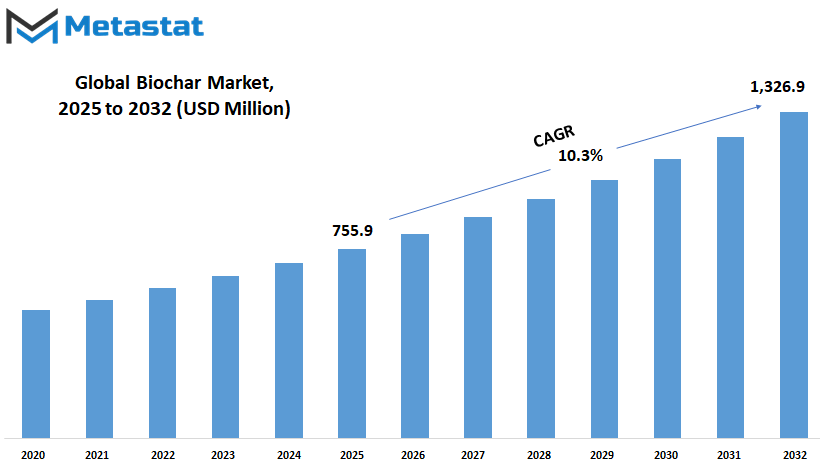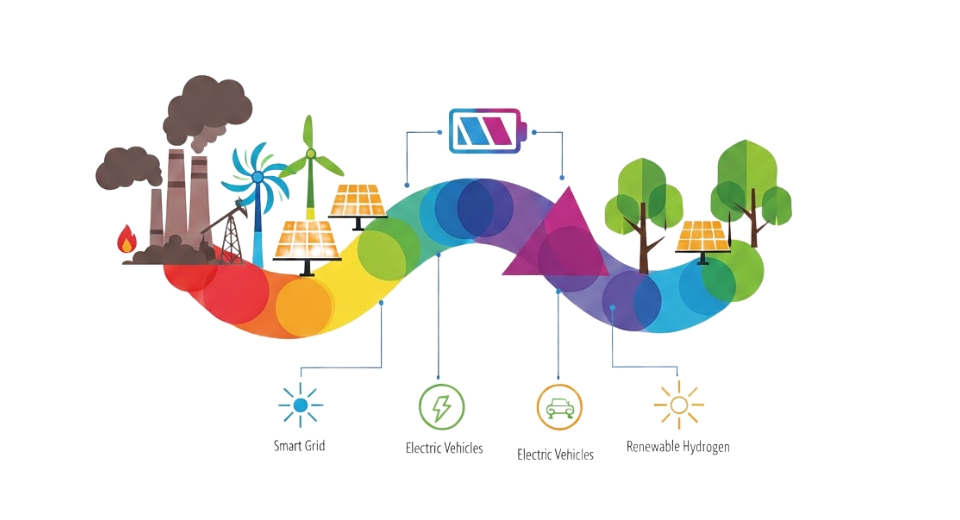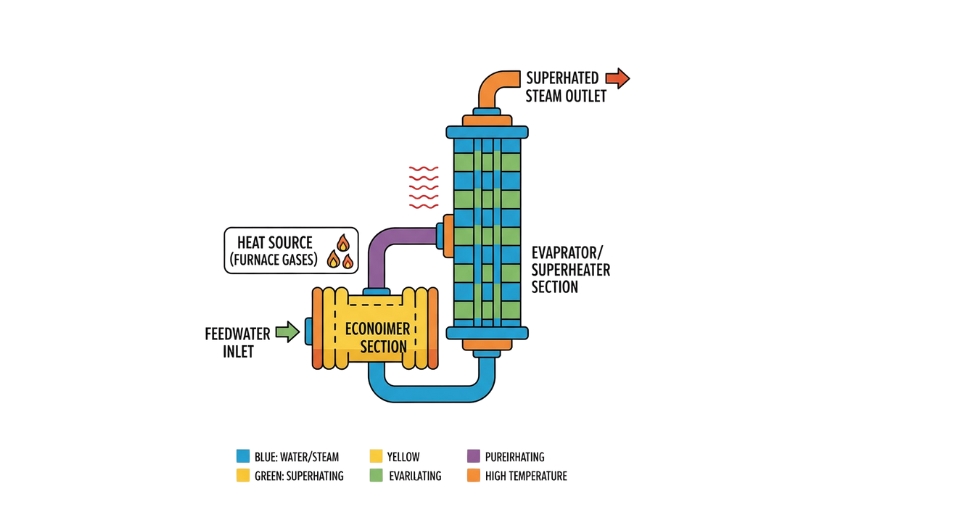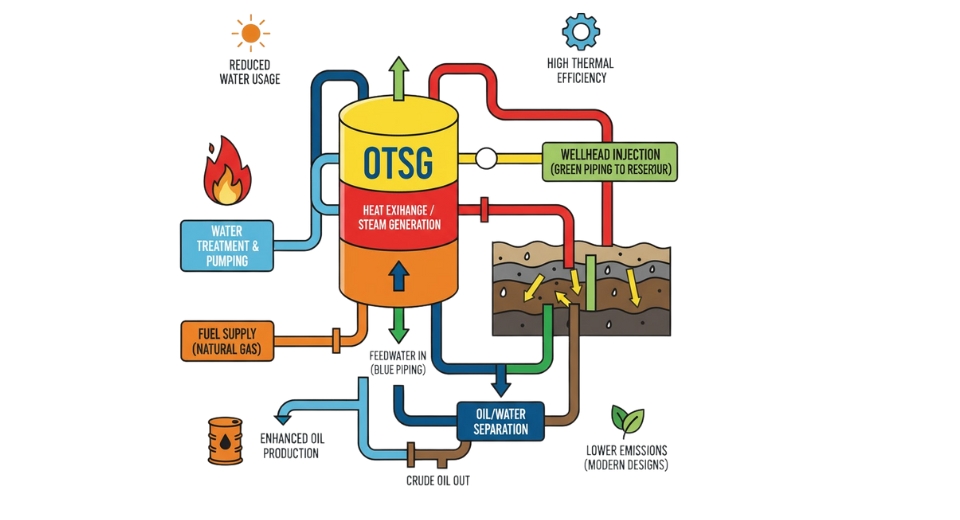MARKET OVERVIEW
The global biochar market is a new and exciting area in agriculture and environmental circles-the emerging broad area of changing traditional farming methods, with significant contributions to the sustainable use of land. Biochar is a carbon-rich material produced from the pyrolysis of biomass, which holds promising potential as a soil amendment, tool for carbon sequestration, and supply of renewable energy. With the challenges of climate change, soil degradation, and food security, the demand for biochar will only grow exponentially, putting a drive to innovation and investment into this dynamic industry.
The biochar industry varies in its nature, includes producers of biochar, agricultural enterprises, environmental organizations, research institutions, and policymakers. These players collaborate to explore the multifaceted applications of biochar and unlock its full potential for mitigating climate change and enhancing agricultural productivity. From small-scale biochar producers utilizing locally sourced feedstock to large corporations investing in state-of-the-art pyrolysis technology, the market is characterized by a spectrum of approaches tailored to specific regional contexts and market demands.
A high level of environmental awareness through biochar application has been a leading factor for growth in the global biochar market. Increasing carbon footprint associated with conventional farming and growing demand for sustainable alternatives for soil health while reducing greenhouse gases are also being considered as main drivers. Biochar, with its potential to increase soil fertility, retain moisture, and sequester carbon in the soil for hundreds of years, is becoming more widely regarded as a feasible answer to these problems.
Advances in production technologies, process optimization, and other factors would boost market expansion over the coming years. From innovative pyrolysis reactors that can produce high-quality biochar on a large scale to integrated bioenergy systems that maximize efficiency, technology innovation is changing the face of the biochar industry. With further research into such complex relationships between biochar, soil microbiology, and plant physiology, more product opportunities and market growth are expected.
In addition, the global biochar market is gaining significant momentum from policymakers and regulatory bodies that are looking to promote sustainable land management practices and achieve climate mitigation targets. Governments around the world are increasingly incentivizing biochar adoption through subsidies, tax incentives, and regulatory mandates aimed at reducing carbon emissions and promoting soil carbon sequestration. This favorable policy environment is expected to catalyze investment in biochar production infrastructure and stimulate market growth across diverse geographical regions.
The market is growing exponentially with rising awareness, emerging technological innovation and supportive policy among stakeholders of both agricultural and environmental sectors on biochar, promising to bring revolution in global current challenges. Over the decades that lie ahead, biochar may become one important corner for sustaining land management.
Global biochar market is estimated to reach $1,326.9 Million by 2032; growing at a CAGR of 10.3% from 2025 to 2032.

GROWTH FACTORS
The global biochar market is expected to grow in coming years with awareness of sustainable agriculture and carbon sequestration. As industries and governments are keen on environmental sustainability, biochar is emerging as a solution that can improve the health of soils and reduce carbon footprints. The market will expand as new ways of increasing its production and application are sought by researchers and companies.
Key drivers behind growth include the upsurge in eco-friendly soil amendments such as biochar. Farmers have an appreciation for the benefits associated with improving soil fertility, retaining moisture, and increasing crop yield through biochar. As climate change affects agriculture, resilient farming methods are urgent requirements.
Biochar reduces soil degradation, making it a valuable resource for farmers who want to increase productivity without degrading the soil over time. Governments and organizations around the world are supporting the adoption of biochar through subsidies and research programs, which is further fueling market growth. Another factor that is influencing the expansion of the global biochar market is its role in carbon sequestration.
Since carbon emissions are a commitment for reduction by nations, biochar represents an effective tool for storing carbon in the soil for long durations. This is why investments have increased in facilities for the production of biochar, especially in regions with more agricultural activity. Companies are now also looking for industrial applications for biochar in wastewater treatment and construction materials to expand its market. Advancements in biochar production technology are expected to shape the future of the market.
Traditional methods of biochar production are being replaced by modern techniques that enhance efficiency and minimize emissions. Pyrolysis, gasification, and other advanced processes are being refined to make biochar production more scalable and economically viable. As research continues, new applications of biochar in industries beyond agriculture could further boost its demand. The growing awareness of sustainable products amongst consumers is another driving force for the expansion of the market.
Companies specializing in organic farming and ecological solutions are now using biochar as part of their products, which increases its presence. In addition, alliances between governments, research institutions, and private companies result in quality biochar that can be custom-made for diverse uses.
Looking forward, the market seems to be moving upwards with the expectations of environmental concern, technological advancement, and wider usages across industries. Biochar is seen to play a significant role as the regulations in favor of carbon-negative solutions increase. Its applications are yet to be discovered, and with new applications in the future, the market will spread and expand, making biochar a significant constituent of future environmental solutions.
MARKET SEGMENTATION
By Technology
The global biochar market is likely to show massive growth rates over the next years. The rising concern for sustainable agriculture and urgent necessity for carbon sequestration methods are contributing factors. Biochar, which is a carbon-based material created from organic waste, heated without the presence of oxygen, has emerged as an effective method of soil health improvement and increased crop yield with lower emission of greenhouse gases.
With such a push towards an eco-friendly environment from both the industries and the governments, it is obvious that the future production of biochar would increase with the improvement and expansion in the scope of production technologies. The process that has been involved in the heating of a biomass under oxygen-free high temperature is considered as a most preferred production method. Pyrolysis is widely used for the production of high-quality biochar as it produces bio-oil and syngas as by-products of biomass.
Future research will develop more pyrolysis techniques that will enhance the efficiency and cost-effectiveness of the process of production. Gasification is another technique that can be employed to convert biomass into biochar and syngas at high temperatures with restricted oxygen. Though more focused on energy production, byproduct biochar from gasification is gaining great attention for agriculture and environmental use. Other newer technologies for improvement in biochar production include hydrothermal carbonization, which might be used for increasing the flexibility of biochar production by the use of wet biomass waste otherwise difficult to handle.
In the near future, the global biochar market will see new developments on improvements that further enhance the quality and functionality of biochar. Researchers will be looking into a means to modify biochar properties and make them more effective in retaining soil nutrients, absorbing pollutants, and even as a filter in water systems. Furthermore, the growing focus on climate change mitigation may also increase investments in biochar projects, especially with the expansion of carbon credit markets.
Companies and governments may take policies that promote the use of biochar, further accelerating market growth. Agriculture will provide the main application for biochar, but future growth is coming from other businesses. There is biochar with potential benefits in wastewater and construction materials plus animal feed products, which the manufacturer can target for new opportunities.
Sustainability technologies are here to stay: with regulatory momentum, the future of the market looks bright regarding the transition from harmful to ‘green’ environmental solutions. As technology evolves and more production costs become reduced, biochar may be one of the widely used solutions for soil health, waste management, and carbon decrease globally.
By Application
The global biochar market is expanding at a very rapid pace in today's fast-paced world. Biochar is a carbon-rich product that has gained acceptance in many sectors because it is produced from organic materials. By application, the market is segmented into Farming, Livestock, Power Generation, and Others.
Farming is one of the biggest sectors where biochar is increasingly used. Its implementation within agricultural farming improves soil fertility, water retention capacity, and nutrient availability. Biochar also helps in carbon sequestration, thereby supporting the principles behind sustainable farming and reducing the effects of climatic variations. As agric-tech continued advancing, there is no doubt that its application in agriculture will improve crop productivity and enhance soil health.
Livestock farming is another domain where biochar finds utility. Biochar use in animal feeds or litter management systems can easily reduce environmental pollution and improve health conditions for livestock. Biochar's ability to absorb toxins and odors can be a pretty good solution when dealing with many challenges in the management of livestock. As awareness about ethically sourced and environment-friendly animal products increases, this adoption of biochar in livestock farming will only increase.
The application of biochar is far beyond farming, livestock, and power generation applications. Through biochar as an effective adsorbent in wastewater treatment, others gain wholesome water quality at a cost. Other applications relate to environmental remediation, carbon sequestration projects, and the production of high-value bio-based materials.
By Feedstock
Its application ranges from an amendment to agricultural soils to carbon sequestration. One key aspect influencing the market dynamics is the diversity in feedstock used for biochar production. Biochar can be derived from various sources such as wood, corn stover, rice stover, wheat stover, and other biomass materials. Each feedstock type offers unique characteristics and benefits, contributing to the versatility of biochar applications.
Wood source biochar remains the leading segment in the market due to its extensive availability and suitability for biochar production. The carbon content of wood-derived biochar is known to be higher, with higher stability, and hence more appealing for soil improvement initiatives.
Corn stove source biochar, as it is often referred to as, is highly sought after owing to the substantial amount of residues generated from agriculture. The process of using stover for making biochar ensures that waste gets managed and serves as an alternative source of revenue for farmers.
Similar to this, rice stove source biochar and wheat stove source biochar are emerging feedstock segments based on agricultural residues generated through rice and wheat agriculture respectively. Biochars from these variants may open up promising opportunities in reinforcing soil fertility and crop productivity in rice- and wheat-growing regions.
Biochar obtained from other stoves sources, including different biomass materials, offers a wide-range choice for biochar production. The use of alternative feedstocks maximizes resource usage and ensures that the processes involved in biochar manufacturing are sustainable.
Future prospects are bright for the global biochar market, with further expansion expected, as more research and development inputs will enhance techniques for the production of biochar and new sources of feedstock. Better biomass conversion technologies and sustainable agricultural practices will mark the future of the market.
The global biochar market is growing rapidly due to the availability of various feedstock options for the production of biochar. Wood source biochar is still a dominant segment, while other emerging feedstock categories include corn stove source, rice stove source, wheat stove source, and other stove sources. Biochar is an excellent solution for soil improvement and carbon sequestration, which is gaining importance in sustainable agriculture and environmental conservation.

REGIONAL ANALYSIS
The global biochar market will exhibit a high growth rate over the next few years as industries and governments focus more on sustainable solutions. Biochar is a carbon-enriched material that is produced using pyrolysis, decomposition of organic wastes, which is finding attention for better soil health and improved productivity in agriculture besides supporting carbon sequestration.
Biochar is proving to be the future element as environmental concerns grow with the amount of greenhouse gases emitted and contributing to climate change. Technological advancement, policies, and higher awareness among the farmers and the industries about long-term benefits shall propel the expansion of the global biochar market in different regions and regions playing specific roles in making it a viable market.
In North America, strong research initiatives and government programs promoting sustainable agriculture will drive demand. The United States and Canada are investing in biochar for soil improvement and carbon capture, with policies encouraging its use in large-scale farming. Moreover, the presence of established biochar producers and research institutions will accelerate innovation and adoption. Growth will be steady in Europe, especially due to rigid environmental policies and efforts toward carbon-negative solutions.
Germany, France, and the United Kingdom have been investing in biochar within their overall agendas for sustainability. Policies on agriculture-related emissions cuts by the European Union will increase the uptake of biochar in various sectors. Asia-Pacific is likely to be one of the fastest-growing regions in the market. Countries like China, India, and Japan are exploring biochar’s potential in agriculture, waste management, and energy production.
Rapid industrialization and a growing population increase the demand for sustainable farming practices, making biochar an attractive solution. With china being the largest producer and consumer of biochar, it is establishing large-scale facilities, while in India, biochar has become an integral part of its soil management strategy for yield enhancement. Regionally, agriculture-based dependence and growing environmental concerns will continue to facilitate market growth.
Latin America and the Middle East & Africa regions are increasingly realizing the benefits of biochar. In Latin America, the focus is on Improving soil fertility and reducing deforestation, especially in Brazil and Argentina. Government initiatives promoting sustainable agriculture are likely to contribute to biochar adoption.
Meanwhile, in Africa, biochar is gaining attention for its potential to enhance soil quality and combat desertification. Countries facing extreme weather conditions and soil degradation may increasingly adopt biochar-based solutions. Improving production techniques and cost-effective solutions will also advance the global biochar market toward wider applications, beyond agricultural applications. The management of wastes, energy generation, and carbon offset programs are innovative applications of biochar to support global sustainability initiatives.
|
Forecast Period |
2025-2032 |
|
Market Size in 2025 |
$51,360.56 million |
|
Market Size by 2032 |
$1,326.9 Million |
|
Growth Rate from 2024 to 2031 |
10.3% |
|
Base Year |
2024 |
|
Regions Covered |
North America, Europe, Asia-Pacific Green, South America, Middle East & Africa |
COMPETITIVE PLAYERS
Presently, the global biochar market is being followed by several significant players who actively contribute to the growth and development of the sector. These players play a fundamental role in steering the course of the biochar industry, every one of which has its distinct strengths and capabilities.
Some of the key players that are currently majorly operating in the market are: Black Owl Biochar, NextChar, Terra Char, Genesis Industries, CharGrow, Biochar Now, Soil Reef, BioChar6, Pacific Biochar Corporation, Airex Energy Inc., ArSta Eco, Biochar Solutions Inc, Carbon Gold Ltd, Farm2Energy Pvt Ltd, Phoenix Energy, and ProActive Agriculture.
Several companies are involved in a wide range of activities along the value chain of biochar, including production, marketing, and research and development. They utilize high technologies and innovative approaches to improve the quality and efficiency of the manufacturing process of biochar products in order to meet the increasing demand for sustainable agricultural solutions.
Black Owl Biochar, for example, boasts itself in high-quality biochar production products in a green and eco-friendly way. NextChar aims at creating leading-edge biochar production technologies focused on maximization of resource efficiency and reduction of environmental impacts.
Terra Char and Genesis Industries are working on expanding the market for biochar products to new markets, while CharGrow and Biochar Now are focused on educating farmers and consumers about the benefits of biochar application in agriculture.
In addition to these established players, there are emerging companies such as Soil Reef, BioChar6, and Pacific Biochar Corporation, which are making a great impact in the biochar industry by bringing new products and solutions to specific market segments.
A few of the frontrunners in developing energy solutions based on biochar include Airex Energy Inc. and ArSta Eco, those who are researching how to take biochar as a potential renewable energy source. Some organizations operating on an active basis today, working towards unlocking new applications for biochar, and development of new markets, are: Biochar Solutions Inc; Carbon Gold Ltd; Farm2Energy Pvt Ltd.
As demand for sustainable agricultural practices continues growing globally, these major players will be at the forefront in leading innovation to ensure the proliferation of biochar as a beneficial soil amendment and carbon sequestration method. Through the functions of collaboration and competition, they will play an active role in how the future marketplace will take shape, all aligned toward more sustainability-resilient farm ecosystems.
Biochar Market Key Segments:
By Technology
- Pyrolysis
- Gasification
- Others
By Application
- Farming
- Livestock
- Power Generation
- Others
By Feedstock
- Wood Source Biochar
- Corn Stove Source Biochar
- Rice Stove Source Biochar
- Wheat Stove Source Biochar
- Other Stove Source Biochar
Key Global Biochar Industry Players
- Black Owl Biochar
- NextChar
- Terra Char
- Genesis Industries
- CharGrow
- Biochar Now
- Soil Reef
- BioChar6
- Pacific Biochar Corporation
- Airex Energy Inc.
- ArSta Eco
- Biochar Solutions Inc
- Carbon Gold Ltd
- Farm2Energy Pvt Ltd
- Phoenix Energy
WHAT REPORT PROVIDES
- Full in-depth analysis of the parent Industry
- Important changes in market and its dynamics
- Segmentation details of the market
- Former, on-going, and projected market analysis in terms of volume and value
- Assessment of niche industry developments
- Market share analysis
- Key strategies of major players
- Emerging segments and regional growth potential








 US: +1 3023308252
US: +1 3023308252






